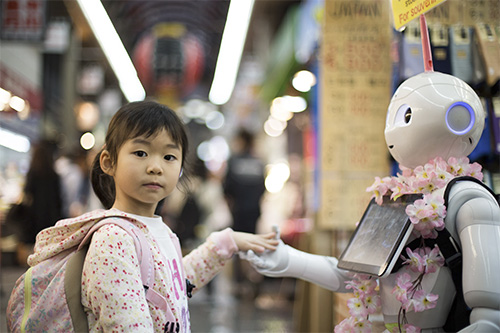It is a widespread myth that coding is only useful for those heading into STEM occupations. On the contrary, students will discover that they will be more successful and productive in whatever field of study they undertake if they have a strong background in computer science. Though not everybody has to become an expert programmer, fields outside of STEM require the ability to understand software and use technology more effectively.
Let’s look at how coding is connected to a few fields that might seem to be unrelated to coding.
Archaeology
The modern archaeologist can be found digging in the dirt for signs of past human activity or at a computer analyzing historical finds. Computational archaeology helps to analyze data collected from an excavation and discover patterns using algorithms.
Simulation models help understand the processes and dynamics of past societies. A computer program can reproduce a physically excavated site making it viewable as a three-dimensional model. Additionally, coding is used in the development of GIS (Geographical Information Systems) that facilitate the creation, integration and manipulation of spatial and geographic data. By utilizing these technologies, archeologists are able to be more successful at their work.
Chemistry
Computational chemistry helps solve chemical problems by complementing the information obtained from experiments. This branch of chemistry can predict chemical phenomena that have not yet been observed. As a result, new drugs and materials are designed using computational chemistry.
AstraZeneca, one of the world’s leading pharmaceutical companies, provides innovative, effective medicines designed to control cancer, provide pain control and fight diseases of the cardiovascular, central nervous, gastrointestinal and respiratory systems. Most recently, they successfully developed a vaccine for Covid-19. Finding a new drug can take years and more than $800 million. Computational chemists at AstraZeneca use PyDrone, a software program written in Python, to narrow down the field of potential drug candidates from the vast universe of possible molecules. This allows them to save time and money on laboratory work where experimental chemists test the drug’s molecules to see how they react. While completing this important work, PyDrone uses Python concepts that are learned by students in a beginner Python course!
Journalism
Computer science and journalism are increasingly being used together to develop innovative methods of gathering information and creating news stories. Programmable drones are a cheap alternative to news helicopters and help journalists report on stories about live or remote events; bots are writing news stories that readers find quite credible; and software tools such as TwitterTrails allow journalists to track, check and verify breaking stories in minutes.
More colleges are now offering courses and study opportunities in computational journalism. Stanford’s Computational Journalism Lab uses data and algorithms to uncover accountability stories, to lower the costs of discovering stories and to tell stories in more personalized and engaging ways. Both in preparation and in practice, computer science skills are becoming more essential as journalists work to provide readers with breaking and reliable news.
Psychology
Traditional data collection in psychology has relied on experiments and interviews which are limited to small audiences and prone to biases. Computational psychology helps to overcome these limitations by using tools from the computer and information sciences to improve the acquisition, organization, and synthesis of psychological data.
Studying computational psychology can lead to jobs such as development of better digital interfaces, human-computer interaction design, and improving the accuracy of self-driving cars. Digital technologies are pervasive in everyday life, and as more data gets recorded and available, the possibilities are endless.
The use of computer science in psychology does not limit psychologists to sitting in front of a computer. Rather, it gives them the freedom to choose how they distribute their time between interacting with patients and computational psychology.
Linguistics
Try this fun sentiment analyzer by pasting some text into it. Or check out the elbot chatbot’s sense of humor. Both are implemented using computational linguistics (CL) — applying computer science to the analysis and synthesis of language and speech.
CL is a vast multi-disciplinary field which connects such disparate areas as foreign language, anthropology, psychology and software engineering. The range of topics that can be studied or researched and the jobs available after studying CL are endless. Doors open for work in improving human-computer interactions, speech and voice recognition and text-to-speech synthesis; documenting summarization and supervision; and developing voice-command interfaces.
Depending on your interest, you can choose specific areas of CL such as Natural Language Processing, AI & Machine Learning, data science, search engines and other pioneering technologies.
Economics
When MIT says that computer science and economics are tying the knot, we stop and listen. Let’s explore what the pair have in common, how they complement each other, and why they are becoming inseparable.
Crunching and testing data sets is nothing new for economists, but now coding languages are increasing efficiency. A computer science technique like machine learning can reveal patterns in data coming from a social network, and economics helps pull back the curtain of why such patterns emerge. Because the amount of data is vast, an economist must do more than use spreadsheets to store and manipulate data. A simple refresh in a spreadsheet can take hours where new systems can manage the task in a matter of minutes.
Students at evcomputing learn many concepts in the beginner Python courses that are used in software tools that economists use. After learning about loops, conditionals, functions, the lists data structure and file input/output, students implement projects related to economics such as text processing and web scraping. The libraries and packages that we use — Numpy, Scipy, pandas, Matplotlib — are the very ones used in research and study of economics.
Business
Business and technology were considered as two distinct fields until quite recently, but the distinction between them is blurring. A new class of hybrid jobs, which combine programming skills and business skills such as analysis, design, or marketing, has emerged.
For example, as marketing increasingly becomes a data-driven discipline and firms adopt quantitative approaches to targeting customers and measuring campaigns, professionals with both statistical and technical skills are increasingly in demand.
Combined studies in computer science and business give students the skills and training needed to understand business functions, to analyze business-user information needs, and to implement systems solutions in business organizations. By exploring computer science topics such as coding before college, students can get a head-start on this.
Finance
Crunching data efficiently to identify trends and patterns better is what finance is all about, but advancements in technology and automation are disrupting some of the traditional roles performed by finance professionals. Programming makes it easier and faster to design complex financial models that can identify the relations between stock prices and the factors causing their rise or fall. As a bonus, knowledge of programming can be a huge boon to personal investment portfolios.
Python has been heavily adopted by the finance industry as it is perfect for data analytics and has a large number of open source libraries. At EVComputing, students work on projects that use Python tools like scipy, numpy, pandas or matplotlib to perform sophisticated calculations and display the results in an easy to understand format. This provides a strong foundation for the future learning of languages such as R and MATLAB.
Biology
Bioinformatics, also called computational biology, uses mathematics, statistics and computer science to address problems inspired by the study of living things. Statiscal techniques, algorithms and mathematical modeling help to analyze large collections of biological data. Even basic beginner Python knowledge enhances productivity in this work.
A nucleotide is a long sequence of simple molecules. The genetic code of all living organisms — DNA — is represented by only four nucleotides A, C, G, and T. A billion character long string of these four letters would represent your DNA. Python string methods and string processing are taught in the beginner courses at evcomputing, which come in handy when finding out how many times a particular letter occurs in a given string.
In the intermediate level course, students learn how to create files and how to read data from files in a Python program. Exercises include reading and searching text from FASTA files. Exercises include reading and searching text from FASTA, a format that is a text-based way to represent nucleotide sequences.
For a head-start in the field of modern biology, and to explore bioinformatics as an area of future study, join any of the Python courses at EVComputing.
Pre-med
Preparation for the pre-med track starts in high school for many students by taking AP courses in math and the sciences. Adding skills in computer science and coding helps the student to stand out in the college application process as well as when being screened for internships and research opportunities.
Summer internships are enhanced by a knowledge of Python, as interns complete projects such as tracking and correlating animal movements with brain activity, analyzing genetic sequencing models for cancer research, and studying the diet of sea urchins in kelp forests
At EVComputing, we often receive requests from students who need to learn Python for research opportunities and summer positions. By learning coding in advance, students will be more prepared and able to be successful in such opportunities.
A solid foundation in coding will give premed students and interns the advantages they need to succeed in an evolving medical field.
Medicine and Health Care
As electronic medical records and telemedicine become the norm, doctors need to be more technically savvy. Though they do not need to grow into expert programmers, a basic familiarity with programming will make their work more efficient.
From filtering trustworthy apps for patients to surgical training through augmented reality, familiarity with programming helps doctors to do independent research and differentiate between hype and the actual potential of a new technology.
Doctors who know some coding can better contribute to the creation or development of health tech, be it virtual consultation tools or fully moveable machines. Aspiring doctors who learn to code stand apart from the rest and can cause unique impact in healthcare.
Political Science
The recent US elections, as well as major events such as Covid, have shown how technology is profoundly influencing public opinion and government policy. Data is constantly being used in political campaigns, and governments depend on data to provide services to their constituents.
In political science, computer technology assists in the development of policies that address the future’s challenges and opportunities. Students majoring in political science or government who know how to program can choose to work in a number of fields, including policy analysis, public opinion research, market research, data mining, and public relations.
Come create a sentiment analyzer, web scraper, or a chatbot on a government policy subject of your choosing with the Python courses at EVComputing and get started on your computational political scientist journey.
Music
A student’s passion for music does not have to end in high school. A growing number of students are combining their studies of music and computer science, creating computer systems to aid in the composition, performance, recording and production of music. On the consumer side, they use computers to understand how people relate to music and communicate through it.
People who can automate and develop recommendation systems are in high demand by music labels and artists. Additionally, there are music-related organisations that need individuals who can gather and analyze vast datasets in order to gain a better awareness of the music industry’s developments and how to best use the rapidly shifting music technology. Electronic music instrument and software design, audio effects developer, and music recording and processing are some of the careers available to students who study computer science and music.
Literature
It might seem as though literature and computer science would have no correlation, but computer science brings much to the field of literature. From bookworms to college professors, coding and programming are improving how works of literature are explored and enjoyed.
One such method is called “Distant Reading,” which involves using software to mathematically analyze literary texts. Additionally, text mining, which involves examining the frequency with which some terms appear, is a part of Distant Reading. It can be used to evaluate speeches and measure the ratios for various pronouns, self-focused words, and future-focused words. It also helps authors see how they’ve progressed by looking through their old writings.
Coding, statistics, and natural language processing aid in the identification of meaningful trends in vast collections of texts that would otherwise be difficult to research by close reading. The evolution of chapter breaks in books, variations in vocabulary between male and female writers, and the average number of words in book titles have all been discovered by combining conventional reading methods with computer science.
Animal Science
The field of animal sciences is undergoing a digital transformation. Improvements in our ability to collect broad and informative data sets are outpacing our ability to analyze them in many areas of animal behavior science.
With the development of more affordable sensing and monitoring technologies, an unprecedented amount of information about animal behavior is becoming accessible. Animal scientists with a background in coding and statistics will be crucial in turning these data into scientific understanding.
Careers in computational animal science can consist of implementing sensor technology to improve the health and wellbeing of farm animals or the analysis of genomic facts leading to higher disease resistance.









No matter what area of study a student decides to pursue, prior knowledge of coding will provide a necessary foundation for careers in the 21st Century. Completing one course in computer science will not transform students into professional programmers, but it will teach students how to work more effectively in a chosen field. Having knowledge in coding and computer science will give students a head start as new jobs and areas of research begin to take root in their field of occupation.
The personalized curriculum and projects at EVComputing enable students to explore how coding and computer science apply to their current goals. The student’s area of interest, whether it’s sports, music, or fiction writing, is taken into account and can be incorporated into the course on a regular basis.
If there is a field of study not covered in this blogpost that you would like to know how it is connected to coding and computer science, please let us know in the comments below.